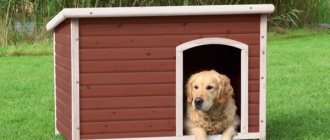The baby toy terrier divides people into two camps. The former are delighted with the miniature creatures and their doe eyes. They are happy to have puppies and are interested in what age toy terriers grow to, in order to supply the dog’s body with all the substances necessary for development at this time. In the second camp they are surprised how this little animal can even be considered a dog. It’s not for nothing that an adult specimen of this particular breed was included in the Guinness Book of Records as the smallest representative of barking four-legged animals.
How old do toy terriers grow?
Description of the breed
The Toy Terrier is an ornamental dog that prefers to live in comfortable conditions, sometimes even without regular walks: they cannot be kept on the street. Although Toy Terriers themselves imagine themselves to be large guard dogs, in reality they are fragile and defenseless. It is not for nothing that the name of the breed is translated from English as “toy”.
The name of the breed is translated from English as “toy”
Body shape, appearance
This is a relatively young breed that was bred in Russia. She was not known for a long time, but in the 21st century there was some kind of explosion of popularity. Everyone started buying Toy Terriers - from breeders to housewives.
The breed standard describes the Toy Terrier as follows:
- the body is square, with a fragile skeletal system, angular muscles;
- not pronounced rounded knees;
- head in the shape of an inverted triangle, rounded skull, large protruding forehead;
- dark eyes slightly bulging;
- pointed muzzle, sharp large ears, set high;
- the tail is long, docked from the second vertebra.
The baby is very nimble and is popular in families with children, as he agrees with them in his desire to play. The average height of a dog at the withers is 20-25 cm. Excellent for breeding in an apartment or private house. Toy terriers live for about 12-15 years, but life expectancy still depends on the care, care and attitude of the owner.
The Toy Terrier feels great in a person's home
Important! You should not adjust your pet to these standards if it will not participate in dog shows or shows.
Wool
Based on coat type, Toy Terriers are divided into two groups:
- Smooth-haired. They resemble a small deer due to their smooth shiny fur and protruding, almost doe-like eyes. The short coat lies close to the body.
- Long-haired. The body is covered with hair up to 5 cm long, which can be smooth or slightly wavy. There is an elegant fringe on the ears, and the fur on the paws completely covers the claws. A special article dedicated to this type of dog has been published on our portal
These varieties do not differ in height and weight. Active babies do not have a strong odor, and their fur does not cause allergies.
Smooth-haired toy terriers
Longhaired Toy Terriers
Color
Some breeders are baffled by the coloring of the toy terrier. Dark coat colors are common, but in reality the Toy can be any color. The following shades are available:
- black and tan;
- brown;
- red of various tones;
- gray-blue (the most fashionable shade);
- lilac, isabella color (experimental shades).
Sometimes puppies of unusual colors are born from crossbreeding. For example, there is a known case when a female fawn toy terrier gave birth to a lilac baby from a long-haired red male. Breeders are increasingly trying to breed dogs of rare and fashionable colors. Although the result is excellent, veterinarians do not advise engaging in such experiments. Such puppies may not live up to 5 years.
Toy terrier puppy of rare isabella color
Character and intelligence
Toy terriers are active, agile and hardy. They are very loyal, becoming attached to only one person, whom they consider the owner. They treat other family members calmly. The puppy is sociable and playful, loves to spend time with children.
Character Traits:
- friendly. He is friends with all family members, guests, and other dogs. Feels great around pets of other breeds, but sometimes can rush even at a large dog if it senses a danger to the owner;
- trainable. Terriers have a very high level of intelligence and can easily remember commands. Even in stressful situations, they are able to soberly assess the situation and make correct decisions;
Interested toy terrier
- babies have an amazing memory: they can remember the owner, even if they haven’t seen him for 5 years;
- cunning. As your pet gets older, its cunning becomes more and more evident. The main goal for a toy terrier is to search for the owner’s weak points, so that he can then easily manipulate him;
- loves to travel. He is ready to go with his owner anywhere - to the store, on a hike, for a walk in the park. Fortunately, the small size of the dog will not burden the owner on the road;
The Toy Terrier is always ready to travel with its owner
- cannot stand loneliness. The Toy Terrier cannot be left unattended: it becomes nervous, angry, and attacks people. Those who cannot spend enough time with their toy because of work should not get this breed or should consider buying two dogs at once so that they do not get bored.
Despite the miniature and sociability, in general the character of the toy terrier is very serious. Inside the family, the dog will behave peacefully towards all family members, but outside it it will protect the owner from any encroachment.
Important! Some owners are confused by the fact that the pet periodically begins to shake while sitting in their arms. This is due to an excess of emotions and energy due to a pronounced temperament. To channel this energy in the right direction, Toy Terriers need to be trained.
Video - Teaching a toy terrier commands
Standard dimensions for a puppy and an adult dog
Compared to other dog breeds, Toy Terriers are very small. They are almost the same size as Chihuahuas - “pocket dogs”. The average parameters of adults and puppies are presented below.
Table. Parameters of adult dogs and puppies
| Males | Bitches | Puppies, 1 month from birth | |
| Height, cm | up to 28 | 20 – 25 | 10 – 12 |
| Weight, kg | 1,3 – 2,5 | 2,0 – 3,0 | 0,2 – 0,4 |
An adult dog weighs on average about 3 kg, which is even less than the weight of a regular cat. Individuals below 18 cm are rare and most often cannot have offspring.
Important! For breeding, it is worth buying dogs with minimal weight. When buying a pet, it is worth remembering that the character of a toy terrier deteriorates over time. Therefore, it is worth choosing puppies and raising them yourself.
Video – Russian Toy
Video “Dog measurements for sewing clothes”
From this video you will learn how to measure the size of a dog for sewing clothes.
Similar article: How to make clothes for a toy terrier with your own hands
Recommended Posts
Weight of a puppy and an adult Labrador by month
Weight and height of a German Shepherd puppy by month
TOP 40 best hunting dog breeds with names, descriptions and photos
38 best dog breeds for apartments according to reviews from breeders and owners
The best hunting helpers: TOP-30 hound dog breeds with names and photos
Standard height and weight of the Cane Corso breed by month
Puppy Development Stages
It is important for any owner to understand the pace and stages of development of the baby from birth. This will help you correctly create a diet that takes into account all the nutrients required by a growing body.
The main stages of development of a toy terrier:
- embryonic: the “baby” is in the mother’s womb;
- suckling - from birth to 1-1.5 months;
- puppy - from 1.5 months. up to 6 months;
- young animals - from 6 months. up to a year;
- young dog - from one year to 2.5 years.
The foundations for future development are laid in the embryonic state of the baby. It is during this period that the most accelerated growth is observed: a puppy can grow hundreds of times in a couple of months. So, on the 40th day of pregnancy, an embryo can weigh several grams, and be born with a weight of 100-150 grams.
Puppy embryo
Toy Terrier puppy weight
So, the baby was born from a pet or purchased from a breeder. Now the owner has a huge responsibility for the life and proper development of the little toy, because he must grow up healthy, strong and cheerful.
Toy terrier puppy playing with his favorite toy
The first rule of a toy terrier owner: you need to measure a new family member every month to monitor his weight. Experts have developed a table specifically for toy terriers that shows what weight should be at a certain stage of life.
Important! At the birth of a puppy, veterinarians can approximately calculate, based on the parents’ data, the weight that the baby can reach. However, this is only approximate information and should not be relied upon blindly.
Why do you need a weight table?
The weight chart allows you to monitor changes in the weight of a growing dog. For example, if during the next measurements serious deviations from the norm were discovered, you need to contact a veterinarian and review the diet. The table contains data that indicates:
- puppy dwarfism;
- small but acceptable weight;
- averages;
- large mass of puppy.
The table will be useful for determining the average weight of your pet. There is no need to take it as an axiom, forcing the growing body of the toy to starve or force-feed if its weight differs from the standard by 100-200 g.
Young toy terrier
Important! The table shows approximate values only and may be slightly distorted. Due to the individual characteristics of each pet, a deviation of 400-500 g is acceptable. However, if at the age of two months the puppy already weighs 2.5-3 kg, it is worth taking some measures. With such weight fluctuations, you need to immediately contact a veterinarian, as they may signal the development of diseases.
Toy Terrier weight table (by month)
Table of toy terrier weight by month
Decoding tabular data
According to the table, by the 30th day of life a newborn should weigh from 200 to 650 grams. But it may be a little larger, since some individuals gain weight well in the first month after birth.
The puppy's further development should look like this:
- 2 month. By this age, babies can grow to a maximum of 1050 g, but they should not weigh less than 320 g;
- 3 months. If previous measurements showed the upper limit of weight, the pet gains another 500 g by the 3rd month, and if the lower limit - 140 g. On average, the weight should not be heavier than 1550 and lighter than 460 g;
- 4 months. Terriers weighing 600 g are considered sufficiently well-fed and healthy, and large individuals can reach a weight of 1.9 kg;
- 5 months. By this age, the Toy Terrier’s weight is approaching its maximum value. Babies weigh from 700 g to 2.2 kg. Despite this, development will continue for about another year;
- 6 months. Most toy terriers already look like adult dogs by six months. They weigh the same - from 800 g to 2.5 kg.
Don't panic if your pet's weight differs slightly from the data in the table. Thus, some individuals do not grow until 1.5 years, like the majority of dogs, but complete their growth at 5-6 months. Accordingly, the pet’s weight will not change noticeably.
Toy Terrier puppies
Adult “girls” will be slightly larger than “boys”: on average, the weight differs by 400-500 g. This is necessary so that the female can bear offspring in the future. At the same time, the birth of toy terriers is full of surprises: a large female weighing 3 kg can give birth to very small puppies, and a miniature dog can give birth to real giants among toy terriers.
Important! It is necessary to evaluate not only the weight, but also the behavior of the dog. A chubby, but alert and energetic puppy will be healthier than a lethargic dog whose weight is according to the chart.
Height and weight standard
1 month
By the end of the first 30 days of life, the baby should weigh from 200 to 650 g. It all depends on the size of the toy. If the puppy’s body weight exceeds the norm by 150 g, there is no need to worry and put the growing “child” on a diet.
We recommend this article:
The best nicknames for toy terriers boys and girls
2 month
At two months of age, puppies should increase their body weight to 1050 g - this is the maximum. The minimum weight of a healthy dog is 320 g.
We recommend this article:
How to quickly accustom a toy terrier to a tray or diaper
3 month
After another 30 days, the dog becomes heavier by another half kilogram if he has the upper mass indicators; and 140 grams, if lower. At this age, the weight of a toy terrier, according to the table, cannot be less than 460 and more than 1550 g.
We recommend this article:
Rules for preparing and vaccinating Toy Terrier puppies
4 month
At 4 months, babies weighing 600 g are considered quite healthy and well-fed, and large representatives of the breed can have a body weight of 1.9 kg.
We recommend this article:
Cropping and setting of ears in toy terriers
5 month
Already at 5 months, the toy’s weight indicators are approaching the maximum mark, although the dog will still grow and develop for at least a year. So, five-month-old terriers can weigh from 700 g to 2.2 kg.
Similar article: What is tasty and healthy to feed your toy terrier
6 month
A six-month-old toy can already have the weight of an adult dog, which ranges from 800 g to 2.5 kg. But don't panic if your toy terrier's measurements differ from those in the table. Not all dogs of this breed grow up to 1.5 years; the growth of some stops already at the age of five months, and accordingly the dog will not gain much weight. Therefore, to clearly answer the question “Until what age does the Russian Toy Terrier grow?” difficult.
We recommend this article:
Independent education and training of a toy terrier
Observe your baby's behavior. A pet should be cheerful, cheerful and very active. If all of this applies to your pet, but its dimensions are different from those indicated in this article, do not worry, everything is fine with it.
How old can Toy Terriers grow?
In general, small breed dogs develop rapidly. Some individuals are able to fully develop in the first few months of life, and then only support and polish the grown body. Such rapid development can end in 5 months, or it can last up to 9 months. Six months is the age when all major development should already be completed.
At six months the puppy:
- the tubular bones responsible for the proportions of the body are finally formed;
- baby teeth fall out and molars appear;
- Growth is slowing down, but weight gain is still ongoing.
If he is large, his body will continue to form after a year, but much more slowly.
Important! The puppy's mental abilities develop throughout the entire period of the pet's growth. Therefore, if it seems to you that a dog at 3 months is not particularly smart, wait. The dog will show what his brain is capable of.
Toy Terrier loves to be in the arms of the owner
Puppy growth by months
Height, as well as weight, depends on the individual characteristics of the pet. According to the standard, the height of a toy terrier should be:
- 6-10 cm at one month of age;
- 10-14 cm when reaching two months;
- 14-20 cm at the age of three months;
- 18-24 cm at 4 months.
Reference. Pets are usually put up for sale at three months. Unreliable sellers often put these babies up for sale under the guise of mini-toy terriers, since the mini version is more expensive than the standard one. Remember: Mini Toy Terriers have different standards, but making sure the breeder is honest will be difficult.
When does a toy terrier stop growing?
Dogs that are small breeds grow very quickly. The rapid development in growth ends from five to nine months. A more precise definition depends on the breed and personality of each individual. Basically, active growth and development of puppies occurs up to six months. Large breed dogs continue to grow and develop after a year, although the growth rate is much lower.
The health of the future puppy begins inside the mother's womb. Responsibility for the growth and development of the baby after birth falls on the breeders. So, the baby should be taken from healthy parents of this breed and a responsible breeder.
Well, then you take a puppy and, as a new owner, are responsible for it.
The first six months of a four-legged friend’s life are characterized not only by an increase in height and weight, but also by a change of teeth. At the same time, tubular bones grow and are finally formed, the correct development of which affects the proportions of the animal’s body.
After six months, the toy's growth begins to slow down, and he still gains weight. The period of up to a year is characterized by intensive development of the chest, as active growth of flat bones occurs.
How long does it take for mini toy terriers to grow?
You will be surprised how many months it takes toy terriers to grow, including mini toy terriers. The accelerated growth of a miniature dog stops at four to five months. It is worth noting that as a puppy grows, its brain activity also develops actively. A four-month-old toy terrier puppy is not inferior in mental development to an adult.
Let us immediately make a reservation that these data are averaged, since the growth and formation of the animal is significantly influenced by the dog’s diet, the conditions in which it is kept, its care, training and education. Special attention should be paid to proper nutrition during the period of growing up and the formation of the body and ensure that proteins and vitamins are present in food. Excessive loads during training or, conversely, a sedentary lifestyle of the terrier contribute to the destruction of bone tissue that has not yet fully formed, which will subsequently lead to diseases of the musculoskeletal system.
Advice
Nutritious puppy nutrition does not mean overfeeding. Otherwise, in addition to excess weight, you will reward your growing dog with diseases of the joints and bone tissue.
But first of all, normal development, including growth, is possible only in the absence of genetic predispositions to diseases.
How long do mini toy terriers grow?
Mini Toy Terriers are a variation of the standard breed. These are real “pocket” dogs, fragile and miniature. Due to their special body structure, their development is slightly different from that of ordinary toys. But for mini-toy terriers there is no separate standard for appearance and weight; it is assessed according to the standard of a regular terrier. Therefore, it is necessary to study their characteristics based on the experience of breeders.
Mini Toy Terrier even fits in a tea cup
Miniature toy terriers grow up to 4-5 months, while the level of development is the same as that of the standard breed. These babies can grow to a maximum of 23 cm and weigh up to 1.8 kg. If, after reaching this indicator, the puppy continues to grow, it means that the breeder decided to make extra money when selling and passed off the standard terrier as a mini-breed. In appearance, these two varieties differ only in growth, but the final result can only be determined after six months.
Important! Mini Toy Terriers are even more fragile than standard ones. They are small enough to fit into a cup. If an ordinary terrier can break a paw by jumping off the sofa, then a mini's fragile limb can be damaged even if it runs very actively on the floor.
When does a toy terrier stop being a puppy?
Dogs of this breed, like any other, mature when their period of physical development stops. In decorative dogs, this period begins at 6-9 months. Growing up can be tracked by some changes that occur in a dog's body. This:
- replacing all baby teeth with permanent teeth;
- shiny, smooth fur instead of puppy fuzz;
- clean bright eyes without discharge;
- muscles are toned, formed and grow thanks to physical activity.
It will not be possible to accurately determine the stage of maturation based on the pet’s height, since the standard already indicates a large range in the indicators. So, an adult pet can reach from 20 to 28 cm. If a dog at 5 months is already 22 cm tall, it is possible that it will grow even more.
Toy terrier nibbles a carrot
Rules and exceptions to the rules
Standards state that an adult representative of the Russian Toy Terrier breed should weigh no more than 3 kg. Females tend to be a little more massive than males due to the fact that they have to bear offspring. The difference in weight is about 500 g. Mini-toys have a standard weight of 1.8 kg.
However, even within the same variety there can be differences in weight. After all, weight is adjusted due to the following factors:
- the puppy's activity level and lifestyle;
- food that the owner chose to feed the pet;
- individual structure of the body;
- the dimensions of the parents.
So, a stocky toy terrier with massive paws will weigh much more than its thin relative. If a dog does not like to go for walks and constantly lies on the sofa at home, it will soon begin to suffer from obesity.
Important! Even if the dog does not want to go outside at all, it is necessary to accustom it to walks and games in the fresh air. Such outings will keep your pet's muscles toned and teach him to be energetic and active.
Toy terrier walking on a leash
Excess weight
If, during the next weight measurement, the owner notices a significant upward deviation from the table indicators, this may indicate obesity of the four-legged animal. In addition to being overweight, obesity is indicated by:
- the dog gets tired quickly and does not want to walk for a long time;
- severe sweating and shortness of breath;
- heat intolerance;
- constipation
The Toy Terrier is fat and no longer looks like the usual miniature puppy. Appears:
- saggy belly;
- fat folds on the buttocks, back, thighs;
- a fatty layer on the chest, due to which the ribs and spine cannot be felt.
Fat toy terrier
What causes excess weight?
There are several factors that need to be neutralized to prevent obesity from occurring. This:
- disturbances in the functioning of the endocrine system;
- failure of the nervous system;
- inactive lifestyle;
- very rare forays into fresh air;
- poor nutrition.
The Toy Terrier must eat properly
What to do about an obese pet?
If extra pounds do appear, first of all you need to pay attention to your pet’s diet:
- You cannot give food from the table every time the puppy asks. Every day you need to include meat, cereals, vegetables, fruits and kefir/cottage cheese in your diet.
- A recovered pet should be put on a diet low in fat and carbohydrates.
- Increase the level of physical activity: take the puppy outside more often, make him run. You can buy or build an obstacle course in your yard for your dog to play with.
You can read more about your pet's diet here .
In addition, you should visit a veterinarian for prevention. In some cases, obesity may be a warning sign of a more serious condition.
Visit to the veterinary clinic
Weight deficiency: causes and how to deal with it?
Being underweight is no less dangerous than being obese. If your toy terrier has significant deviations from the standard weight downward, you need to contact a veterinarian. Before visiting a doctor, preventive measures are taken to remove parasites from the dog’s body. You can try to increase the number of meals, check the composition of the food and make sure its quality. If necessary, select another specialized food.
Lean toy terrier
How to feed a puppy so that it develops properly?
One of the main components of proper development is a balanced diet rich in vitamins and minerals. It is better to create a menu with a veterinarian, who takes into account all the individual characteristics of the pet, its size and level of physical activity.
From a very early age, a toy terrier should be accustomed to a feeding schedule and adhere to it constantly. Food is given at strictly defined hours. The number of feedings depends on the age of the pet:
- 1.5 – 3 months: 6 times a day;
- 2 – 4 months: 4 times a day;
- 4 – 6 months: 2 times a day.
An adult pet is fed twice a day: morning and evening.
Important! It is important for a Toy Terrier, like any other dog, to be given clean drinking water every day. A dog weighing 1 kg drinks 40-50 ml of water per day. Pure water contains minerals that affect skeletal development.
I'm thirsty!
Diet of a toy terrier during the period of weight gain
At 4-6 months, puppies begin to actively gain muscle mass, so during this period it is necessary to provide a diet with the necessary amount of calcium, protein and vitamins. A growing toy terrier needs daily:
- 6 g protein;
- 2 g fat;
- 1.5 g fiber;
- 250 mg calcium;
- vitamins A, D, E.
All these beneficial substances can be found in industrial feed. For a Toy Terrier, food for small breeds is suitable. You cannot choose economy-class food, as it will only harm your pet. The optimal solution is premium or super premium food. They contain all the microelements necessary for proper development.
Dry food for small breed dogs
Feeding with natural food is also possible. When choosing such food for your pet, you must adhere to general recommendations and consult a veterinarian.
Top 10 Foods Dangerous for Dogs
What to feed a puppy for growth?
A balanced and properly formulated diet is of greatest importance. It is better to draw up a feeding regimen together with a specialist. It is imperative to take into account the characteristics of the breed, size and physiology.
In the period from one and a half to three months, the puppy needs quite frequent feeding: about six times a day. Gradually, the number of feedings should be reduced to four, and after two months to three times.
When the puppy reaches six months, he is transferred to two feedings a day, morning and evening.
It is worth noting that after six months, puppies are actively gaining muscle mass, so they need sufficient amounts of protein, calcium and vitamins.
So, for 1 kg of weight you need:
- nine grams of protein;
- two and a half grams of fat;
- fourteen grams of sugar and starch;
- one and a half grams of fiber;
- five hundred milligrams of calcium;
- as well as vitamins A, D and E.
What to feed a puppy for growth? There are two types of feeding: natural food and factory feed.
Pet food at the premium level and above has quite great advantages. For example, they contain all the necessary macro- and microelements, vitamins, and are fully balanced for a specific breed, age and characteristics of the dog.
If the puppy eats natural food, then follow the general recommendations.
Important! Salty, smoked, fatty, and spicy foods are prohibited for dogs.
Raw meat is given with caution, as it may be contaminated with helminths. You should completely exclude flour, sausages and various sweets from your diet!
All this is poison for the dog’s gastrointestinal tract. Her teeth may become damaged and her eyes will water. Small bones that can pierce the esophagus or stomach are dangerous.
It is recommended to adhere to a certain feeding schedule and accustom the puppy to it from a very early age.
It is extremely important to meet your dog's water needs. So, for one kilogram of weight you need to give from forty to one hundred milliliters of water.
A properly balanced diet and sufficient intake of minerals even affects the development of the dog’s skeleton. A tendency to pathology of the skeletal system is more common in large breed dogs, such as the German Shepherd, St. Bernard, and Labrador Retriever.
Thus, scientists studied the effect of nutrition on the growth process and identified two main factors:
- overfeeding;
- excessive calcium intake.
It follows from this: it is extremely important to maintain a balance of this mineral in food, since an increase in the rate of calcium intake causes deviations in cartilage tissue, and a reduced intake increases the risks of developing a weak skeleton and an increase in the incidence of fractures.
Important Details
- If you plan to breed Toy Terriers, you should buy a female weighing at least 1.8 kg. A dog with less weight will not have a chance to bear healthy offspring;
- It is important to remember that toy terriers, especially toy terriers, are very fragile animals. They must be treated with the utmost care;
- Toy Terriers need training, but you shouldn’t overexert your pets. Due to heavy loads, bone tissue that has not yet formed may begin to collapse;
Toy Terrier training
- To completely eliminate the risk of disease in the future, when purchasing a pet, make sure that they do not have a genetic predisposition to any dangerous diseases.
What should be the weight of a toy terrier?
According to standards, the weight of an adult toy terrier should not exceed 3 kg, while males are generally smaller than females - the average difference is about 0.5 kg.
The unofficial classification of the breed includes 3 types:
- Standard Russian Toy Terrier, weight varies from 2 to 3 kg;
- Mini toy terrier, adult dog weight 1.5-1.8 kg;
- Super mini - less than 1.5 kg.
It is worth noting that the smaller the pet, the weaker its health. For example, bitches weighing less than 1.9 kg are contraindicated to give birth to puppies, due to the insignificant chances of survival of the offspring and the dog; you can read in detail about childbirth in our other article.











